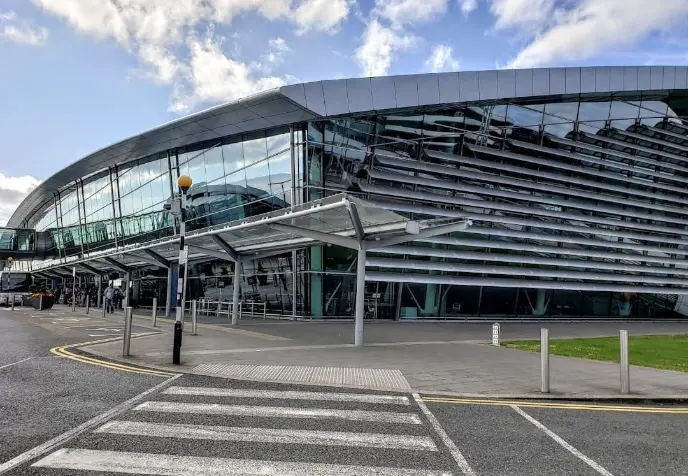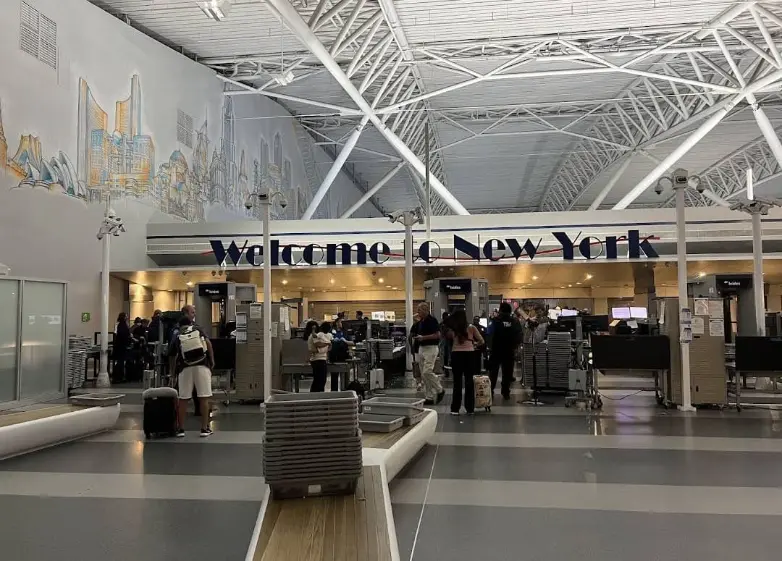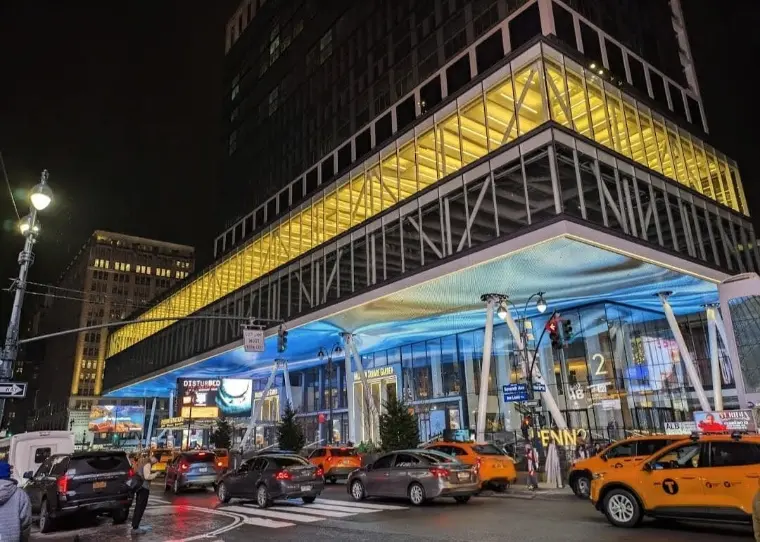Standing at Dublin Airport with your boarding pass in hand is one of those moments that feels exciting and a little unreal. You know adventure is waiting, but the trip ahead can seem more complicated than it really is. The good news is, flying from Dublin to New York doesn’t have to be stressful.
This guide brings together the useful facts that save time, the small habits that make long travel days easier, and a few things you’ll want to know before booking. It’s written for travelers who want clear, no-nonsense help that actually makes a difference. On Dublinz, you can find more effective travel tips and related information to ensure a hassle-free and enjoyable trip!
By the time you’re through, you’ll have a simple plan that turns the journey into part of the fun and makes landing in New York feel like the start of something, not a test of patience!
The Basic Picture and Why One Detail Matters More Than Most
Here’s something that makes this route surprisingly easy. Dublin takes care of U.S. immigration and customs before you even leave the ground. It all happens in Terminal 2, which completely changes how your arrival feels once you touch down in New York.

Because you’re already cleared in Dublin, you simply step off the plane and go straight to baggage claim or your ride. It’s one of those behind-the-scenes details that saves real time and makes the trip smoother than most first-time travelers expect.
The airport’s website breaks down how preclearance works and shares when Terminal 2 tends to get busy. It’s a good idea to check their latest updates, since not every flight operates within preclearance hours. A quick look before booking helps you know exactly what to expect on travel day.
How Long the Crossing Takes and the Distance You Cover
Flights from Dublin to New York usually take around seven and a half to eight hours. Weather and wind can nudge that number a little, but it’s generally a full transatlantic stretch that is long enough to rest, catch a movie, or grab a short sleep.
The journey covers roughly three thousand one hundred to three thousand two hundred miles, depending on the exact route and which airport in New York you arrive at. These figures help you plan meal times, rest breaks, and your first day’s energy once you land.
Which Carriers Run Nonstop Schedules and What That Means for Your Arrival
Several airlines operate nonstop flights from Dublin to New York. You’ll find regular services from Aer Lingus as well as major U.S. carriers flying into John F. Kennedy and Newark Liberty. Flight times can shift with the seasons, so it’s worth checking the latest schedule before you book.

Your choice of airline can shape how your trip unfolds. Each airport puts you in a slightly different spot within the New York area, and onboard comfort varies between carriers. If you prefer familiar seating layouts or want to use your loyalty points, take a moment to look into each airline’s cabin setup and policy. Flight search tools make it easy to compare nonstop options side by side and see how the timing fits your plans.
Price Patterns and the Booking Approach That Works
Ticket prices of Dublin to New York shift with the seasons. Winter often brings the lowest fares, while summer tends to be more expensive as demand rises. If cost matters most, keep your travel dates flexible and set up fare alerts so you catch price drops early.
Booking a few months ahead usually gives you better economic options. Sometimes, last-minute deals appear if you can travel on short notice and don’t mind whichever seat class is available. Travelers looking for extra comfort can also find occasional offers on premium economy or business class that deliver solid value compared with a standard ticket.
Plan Your Time at Dublin Airport So You Are Not Rushed
Give yourself enough time at Terminal 2 to check in, clear security, and complete the U.S. preclearance steps. Morning flights and busy travel periods can create longer lines, so plan a cushion that feels relaxed rather than rushed.
If you’re carrying work or prefer a calm start, consider aiming for a quieter flight slot. Airport lounges can also help, offering space, Wi-Fi, and charging points before you board. Dublin Airport’s website shares helpful details on each preclearance step and when the crowds tend to build up.
Passport, ESTA and Entry Paperwork to Get Right
Travelers entering the U.S. under the Visa Waiver Program need an approved ESTA before flying. This electronic authorization is required, and airlines cannot allow boarding without it. Apply at least seventy-two hours in advance, since instant approvals are not always possible.
Double-check that the passport you use matches your ESTA details and meets all validity rules before your trip from Dublin to New York. The official ESTA website clearly lists the conditions and step-by-step application process.
Important Note About Device Searches and Privacy
U.S. Customs and Border Protection has the authority to inspect electronic devices at entry points, and that includes preclearance zones abroad. While such searches are rare, they do occur. The official CBP website explains how the process works and what travelers should expect.
If you carry sensitive files, back them up and decide what you want to keep on your device before flying. Refusing an inspection can create complications, so a little preparation goes a long way in keeping things smooth if your device is selected for review.
How to Get Onward Into Manhattan from the Airport You Choose
Once you arrive, getting into Manhattan is easier than it might seem.
If you’re flying into John F. Kennedy Airport, the AirTrain is your first step. It links directly to Jamaica Station, where you can switch to either the Long Island Rail Road or the subway. The whole trip usually takes between forty minutes and an hour, depending on how your connections line up.
Landing at Newark follows a similar pattern. You’ll take the airport’s AirTrain to reach the New Jersey Transit line, which runs straight into Penn Station in Midtown. Travel time is often close to what you’d expect from JFK.

Taxis and rideshares are convenient, but they can be pricey and unpredictable during rush hours. When choosing your airport, think about where you’ll be staying and how you prefer to travel after landing. Transit authority websites are the best place to check current fares and the smoothest connection options.
What to Carry in Your Carry-On and How to Sleep on the Plane
A few small items can make a big difference on a long flight, especially on a trip like Dublin to New York. Pack a travel pillow, earplugs or noise-cancelling headphones, an eye mask, and a mini toiletries kit. Add a power bank for your devices and make sure it follows airline guidelines. Keep it in your carry-on instead of checked baggage. Most airlines allow batteries up to one hundred watt-hours, while anything above one hundred sixty is not permitted.
For rest, try booking an evening departure so you can sleep during your natural nighttime. Adjusting your sleep to New York time helps your body adapt faster. Stay hydrated by drinking water throughout the flight and go easy on alcohol, which can make jet lag worse.
Seating, Leg Room and How to Pick the Right Spot
The seat you choose can shape the entire trip. If you like being able to move around freely, an aisle seat makes life easier. If rest is your main goal, a window seat gives you a wall to lean on and fewer interruptions.
Reserve your preferred spot early since popular rows fill quickly. If you want more space, check for extra legroom seats or premium economy. The small upgrade often pays off on longer routes, giving you a bit more comfort and room to stretch when the hours start to feel long.
Hacks That Actually Save Time
A few simple habits can make your time at Dublin Airport easier. Check in online and have your digital boarding pass ready when you reach the desk for bag drop. Weigh your checked luggage at home to avoid surprises at the counter. Keep liquids and electronics accessible when you go through security, and plan extra time if you’re traveling during busy periods.
If you want a calmer space to work or relax, consider buying lounge access. It gives you reliable power, seating, and a quieter environment before your flight. Dublin Airport’s website lists all the services available for travelers heading to the U.S. and notes the times when queues tend to build up.
Choosing the Flight That Fits Your Priorities
Different travelers have different priorities, and your choice of flight should reflect what matters most. If getting to New York from Dublin quickly and simply is your main goal, pick a nonstop flight that lands early in the day so you can make the most of your first hours.
If cost is your main concern, be flexible with travel dates and check midweek options for better fares. For those who prefer a certain loyalty program, seat type, or aircraft, use filters to find what fits your needs. Focus on the combination of total travel time and convenience rather than just the shortest flight duration.
First Hours After Arrival and How to Fight the Fog
Because preclearance happens in Dublin, arriving in New York often feels smoother than expected. On your first day, keep plans light. Take a short walk in a neighborhood you like and use daylight to help reset your body clock. A quick coffee and a casual stroll are better than rushing through a long list of tourist stops.
If your flight lands late, find a nearby restaurant, have a meal, and head to bed early. Giving your body time to adjust makes the rest of the trip much more enjoyable.
Final Words and a Simple Checklist to Feel Calm and in Control
This route works well for both business travelers and holidaymakers because nonstop flights combined with preclearance remove the biggest annoyances of transatlantic travel. A few thoughtful steps can make your journey feel smoother than expected.
Apply for ESTA well in advance. Book seats that suit your sleep and movement needs. Give yourself extra time at Terminal 2 for preclearance. Pack a small comfort kit for the flight. Choose the arrival airport that is most convenient for the part of New York you plan to explore. Official airport and border agency websites cover the fine print and provide up-to-date guidance, so check them as you finalize your plans.
If you’re exploring other routes or looking for your next destination, visit Dublinz’s Facebook and Instagram pages to discover Irish food, travel, and lifestyle news at a glance!